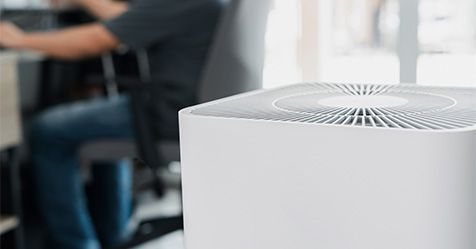Organizations are making significant progress with their diversity, equity, and inclusion (DEI) efforts, but their leaders might not realize that facilities need to be a part of the overall DEI strategy. Employees with physical disabilities, or who are neurodiverse, may find parts of the workday that are routine for others—like using the restroom—particularly challenging.
Companies have a tremendous opportunity to boost their DEI efforts by making their facility restrooms more inclusive. Consider the information presented in this article to learn why the need for inclusive restrooms is significant and what steps your organization can take to ensure all employees can access proper hygiene.
Don’t overlook hidden hygiene barriers
Barriers to quality hygiene practices in public restrooms are often not obvious and affect more people than we realize. A 2024 survey conducted by professional hygiene brand Tork, a part of hygiene product manufacturer Essity, found almost one in three Americans face barriers to washing, including injuries, health conditions, or physical abilities. The condition of public restrooms can also discourage proper hygiene practices. According to the survey, one in three Americans cite dirty conditions as a barrier to using restrooms, including the restrooms in their workplace. This barrier can seriously impact employee mental health, workplace satisfaction, and business performance.
Providing hygiene-inclusive, well-functioning workplace restrooms can help retain staff and maintain high employee satisfaction. Without these accommodations employees are more likely to leave the company altogether; one in six respondents to the 2024 Tork Insight Survey said they have left a job due to poor restrooms.
Even among employees who stay, restroom issues comprise 45% of all office building complaints, more than any other reason, the Tork survey reported. Providing barrier-free hygiene in workplace restrooms is critical to ensure staff are comfortable in the office environment so they can do their best work.
Assess employee hygiene needs
Facility and company managers should take proactive steps to ensure the hygiene offerings in workplace restrooms will keep employees safe and happy. First, set up a meeting with the organization’s DEI leaders to better understand the company’s holistic strategy and how providing inclusive hygiene in public restrooms can play a role.
Engage with employee resource groups (ERGs) about the topic of inclusive hygiene through a survey or questionnaire. This step offers the opportunity to hear firsthand about the barriers your team members might be facing, and how you can help them. Remember to keep employees’ comfort in mind by providing anonymous feedback tools for those who want to keep personal information private.
Additionally, be sure to consult cleaning staff, who might also face barriers in their everyday tasks. Consider remedying these issues by providing high-capacity cleaning products and tools that have intuitive, ergonomic designs, and are easy-to-use.
Start with small changes
Next, take a close look at your existing restroom facilities—you may be surprised by the barriers you find. The 2024 Tork Insight Survey found that although 93% of company leaders and managers think it is important to provide inclusive hygiene in restrooms today, less than 50% consider implementing many of the accommodations that make hygiene more accessible, like gentle soap and accessible dispensers.
Company decision makers might not view hygiene offerings as a place to act on their DEI strategy, or facility managers may not know where to begin to implement such changes. But restroom updates need not be a complete overhaul, as there are small changes you can make that will have a big impact.
When considering your hygiene product offerings, think of providing soaps and hand sanitizers that are dermatologically tested to be mindful of those with skin sensitivities, like eczema. If you have hand dryers in your restroom, also offer hand towels for people who are sensitive to loud noises. Lastly, ensure that restrooms are regularly cleaned by leveraging data-driven technology, such as smart sensors, that identify areas that need attention in real-time. This technology will ensure your maintenance staff can deliver efficient and effective cleaning. It will also provide reassurance to restroom patrons who have a phobia of bacteria, struggle with obsessive-compulsive disorder (OCD), or are especially sensitive to dirty environments.
Beyond providing inclusive hygiene, it’s important to raise awareness about the importance of it among employees and demonstrate your commitment to inclusive hygiene throughout the workplace. One way to do so is by implementing signage about inclusive hygiene elements in your restroom, such as a small sticker on dispensers to indicate that they are touchless.
Boost employee productivity through DEI
DEI is a major pillar of modern business, and it is crucial to think about all the ways it can apply to your business and workplace environment. Expanding your DEI strategy to include facility restroom hygiene shows that you care about employees’ health and are providing a quality environment to support them in delivering their most effective work.
Take the next step in your organization’s DEI journey by ensuring inclusive hygiene in your facility’s restrooms through meaningful employee engagement and quality product offerings. It will make a difference for your business and the lives of your employees.



